Explaining UX with a glass of lemonade
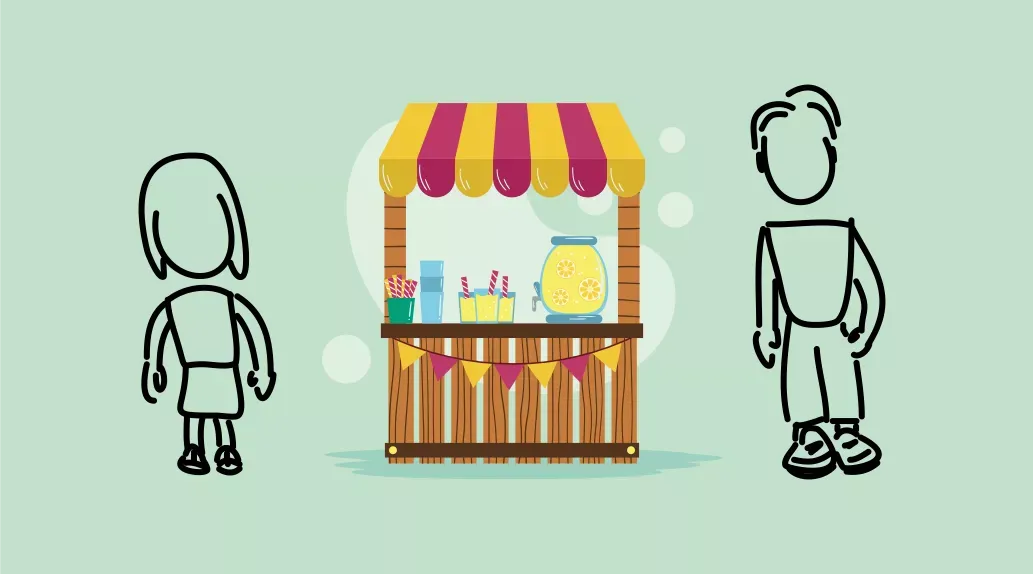
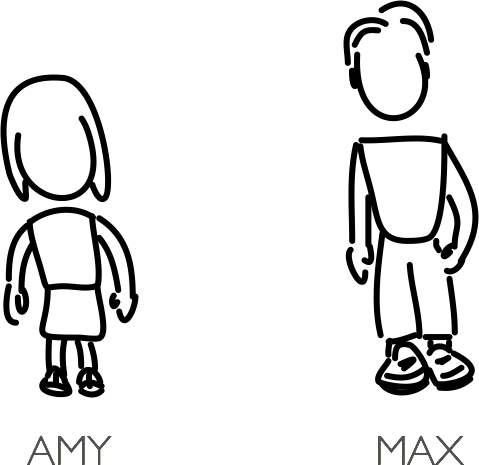
This is Amy and her brother Max. They are 8 and 12 years old.
Max is a great snowboarder. And Amy, she wants to be just like him. But their parents say Amy can not get a snowboard until she is 10 years old.

Amy loves making lemonade, and she has an idea. She has seen in books that children can run lemonade stands. If she can make her own money to buy the snowboard, can she buy it herself for their winter skiing trip? Her parents laugh and say yes, thinking she is cute for thinking she can make that much money by herself.
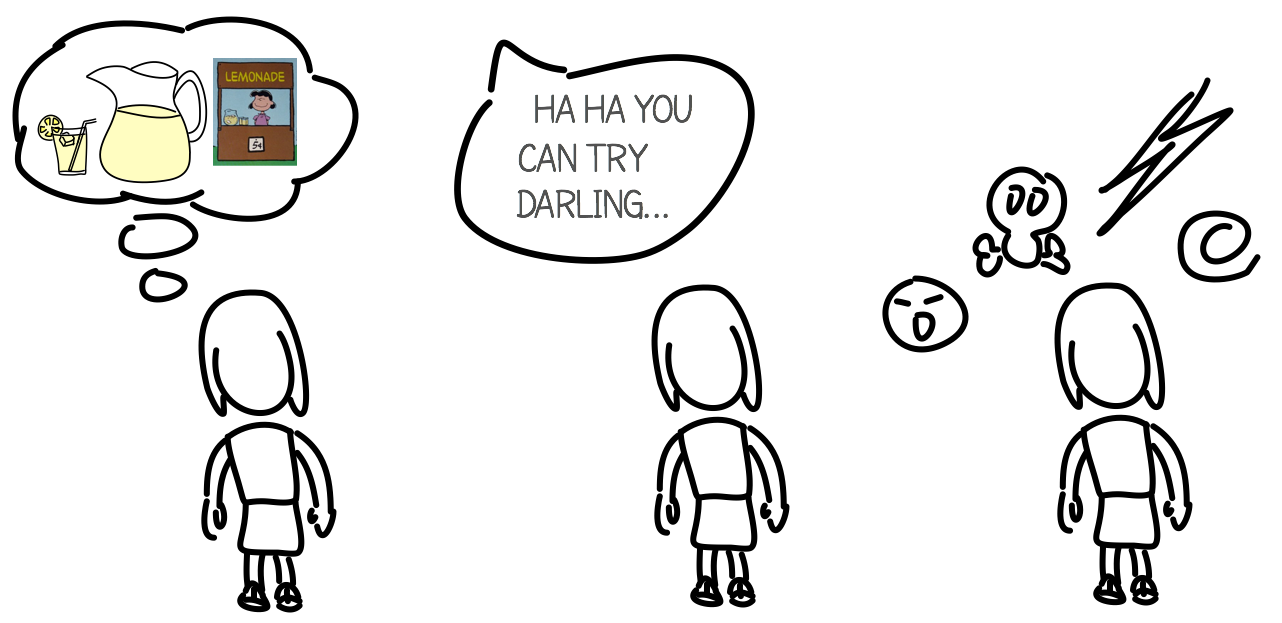
This pisses her off, so she decides to really show them.
Max thinks her sister is pretty cool and want to help her. It would be fun to have another member of the family to snowboard with. Also, Max is not an asshole. That’s why Amy likes him.
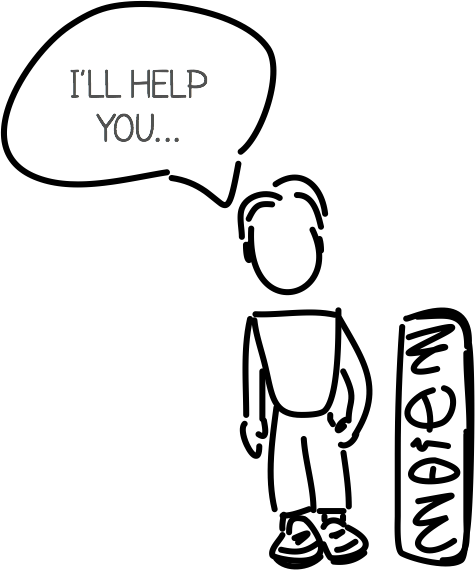
Amy already has a great lemonade recipe they know that family and house guests really love, and they agree to spend time before school and after school selling the lemonade.
Where Amy and Max live, lots of people go to work by bus and many people walk to the bus station in the morning, and on their way home from work. They think that setting up their lemonade stand close to the bus stop would be a smart idea.
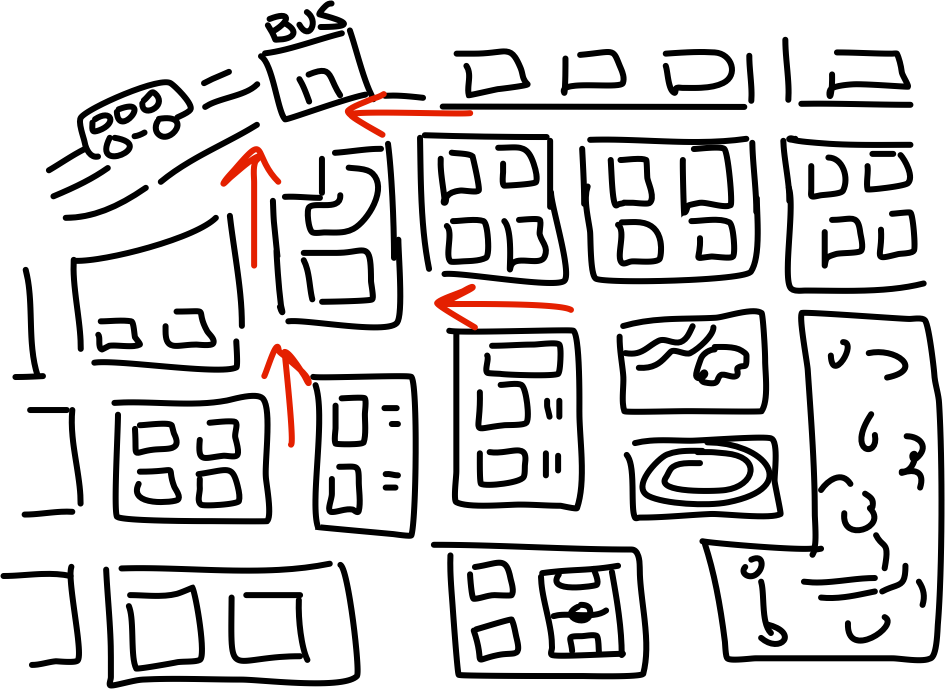
On their first attempt, on a Monday, they bring a foldable table and five pitchers of lemonade. They only sell a half pitcher in one hour.
As it turns out, people seem to be in a hurry, running to and from the bus, and don’t really stop and see them. Amy keeps count and only 1 in a 100 people who pass stop to buy a glass of lemonade. Most of them people who Amy and Max already know.

After trying this for two weeks they realize that Friday afternoon seems to be the best day for selling lemonade. People seem to be more relaxed and stop to talk to the kids, seemingly now seeing them for the first time.

Max has an idea: what if they don’t stand so close to the bus station, where people seem to be very stressed, how about they stand somewhere where people aren’t running but are more relaxed when they pass.
They find a spot further away… nicely framed between two trees. This time when Amy keeps count she realizes that 1 in 40 people who pass by will buy. In a less stressful area people will buy more. But not as many people pass by, so they still only sell a pitcher. At this rate it will take 2 years to make enough money.

By this time they realize that the best spot is under the trees but they need to find a way to get more people to go past that spot, maybe even make a habit out of it. They talk to their friends, Cousin Carol and Artistic Adam, and they agree to help.
Carol thinks they need to convince people that lemonade is a really good choice. She knows most grownups drink coffee in the morning and thinks maybe the lemonade could be an alternative. And Adam starts working on a sign they can put up.

The next week Carols new slogan, carefully placed signs and a brightly colored lemonade booth design by Adam really makes a difference. A lot more people are attracted to the area and become regular customers.

Coffee will leave a stain.
Lemonade will boost your brain.
When people say they will tell their friends Max realizes that he should help people tell more friends. As an enthusiastic user of Instagram he knows the power of social media and pictures.
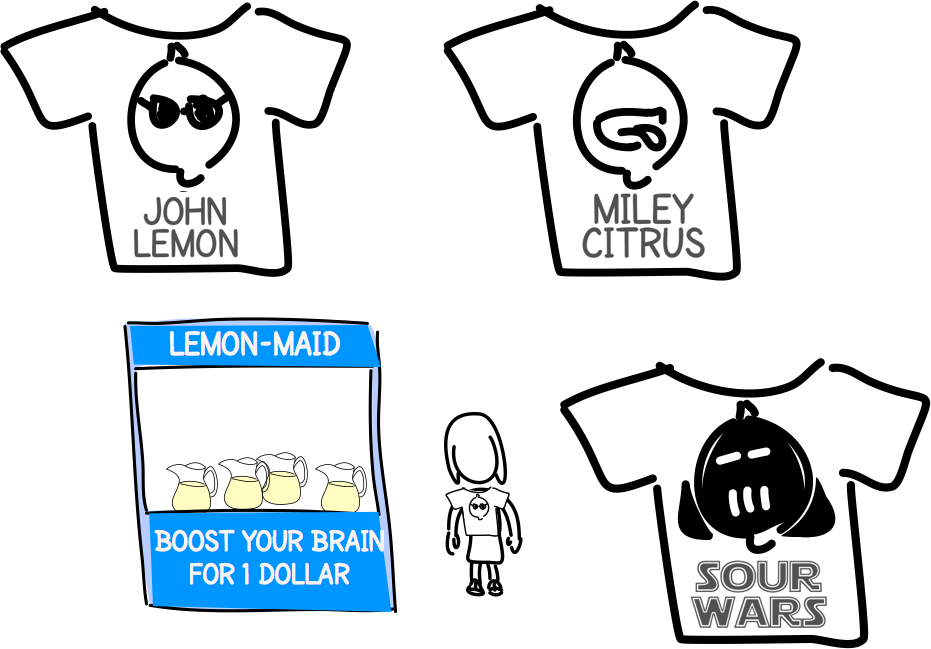
As the front figure of the business, they make sure that Amy, who Cousin Carol thinks to start calling “the Lemon-Maid” has a new t-shirt every week, with a cute design and message. They make the t-shirts in Adam’s inkjet printer and iron the designs on. People love how cute this is and start spreading the pictures in every channel imaginable, spreading the news about the Lemon-Maid to lots of new people.

Now that other people were marketing them, they didn’t have to spend as much time pulling people in, and could do some more thinking about how to make more money from the people who were already coming. Was this the right time to raise prices?
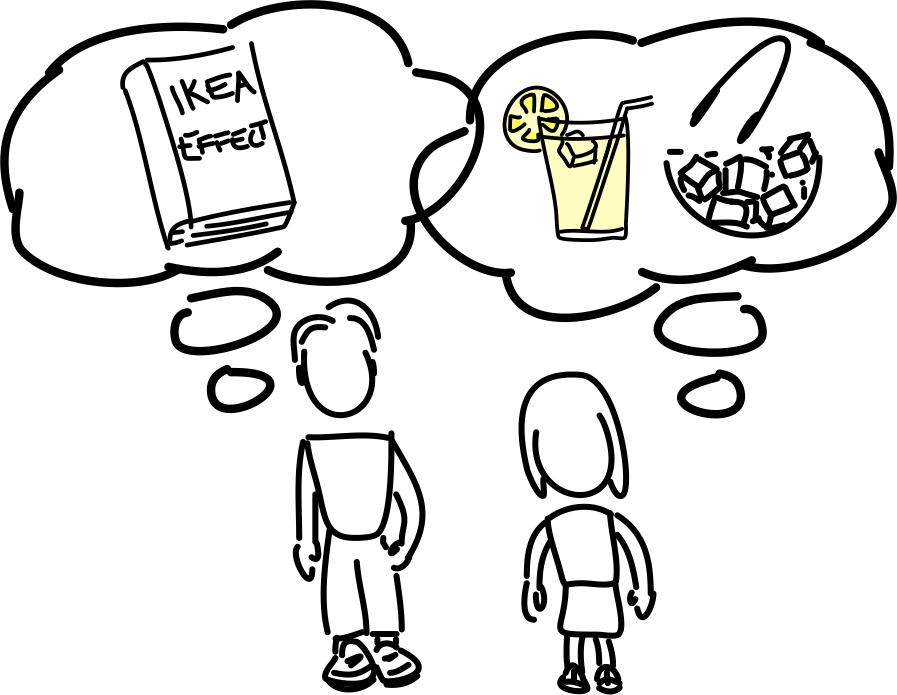
Always on the lookout for new ways to make sure they make money faster, Max one day reads about something called the IKEA-effect. Apparently, if you yourself help make something then you will also like it much more. Well he couldn’t have people make the lemonade but when he talks to Amy she comes with the idea of letting people add their own ice if they want.
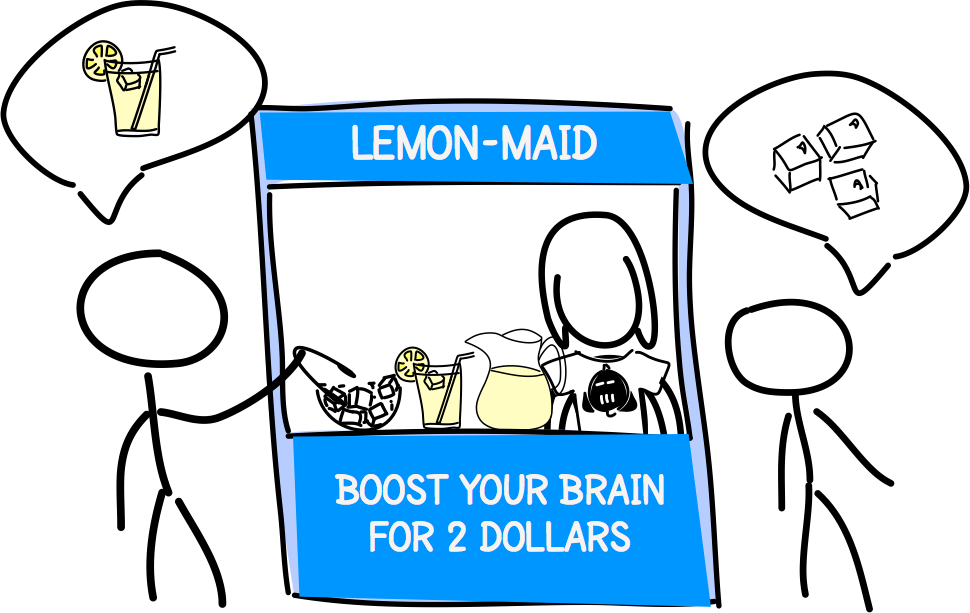
This, again, turns out to be a success, people love adding their own ice, it makes them feel like a real part of the process and they even start talking about how the lemonade now tastes so much better, did the Lemon-Maid perhaps change the recipe?
Well, in a sense she had: she had added a spoonful of customer involvement.
But something else happens too, when people see the ice. Almost every Friday people start asking if they can buy ice. Well, they don’t have enough ice to sell, but the team starts talking about this. Water is free for them, and if they could sell ice every Friday they could maybe even double their profits, they are now getting very close to being able to buy the snowboard for Amy.

They start small and the ice business is booming. Soon enough they are making most of their money selling ice and things just rocket from there. In one week, just on ice sales, they make more money than they made in the previous five weeks.

Here are some of the things the lemon team did:
- Had a great product.
- Understood how people react to stress and made sure to create a stress-free environment.
- Understood the incentive for habits (coffee) and making the best use of that knowledge.
- Attracted with copywriting and design.
- Made clear signage to help people understand and make the right decisions.
- Created shareable items that helped other market them.
- Made it easier for people to feel a connection with the playful portrayal of the Lemon-Maid.
- Used psychological phenomenons, like the IKEA-effect, to increase the perceived value of their product.
- Listened to customers to adapt and pivot their product and offerings to their customers’ behavior (ice on Fridays).
15 years later…
15 years later Amy is the CEO of Lemon-Aid, a company that invests in teenage entrepreneurs. Her executive team consists of Carol the copywriter, Adam the art director and her brother Max, the UX designer.

Together they had learned that if they all worked together, all the time tweaking and making their product better in small steps, nothing could stop them. Other grownups called this Lean UX. They still just called it the same as when they were kids: experimentation and teamwork.

And four times a year, Amy brought them to her cabin in the French alps where they all went… that’s right, snowboarding.


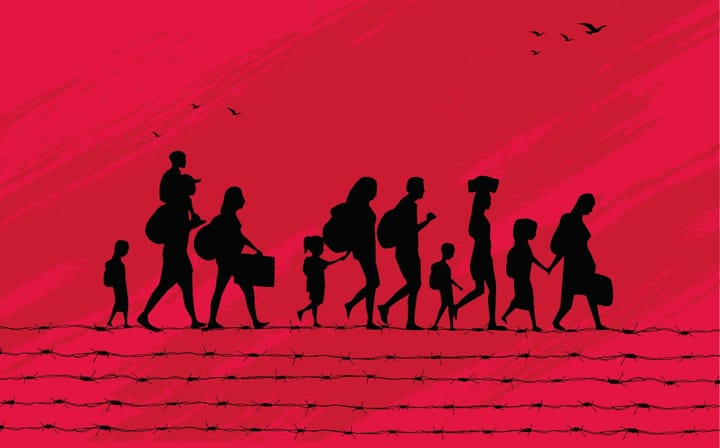

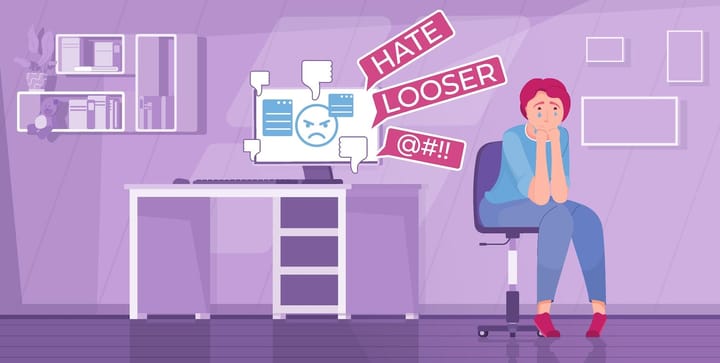
Comment